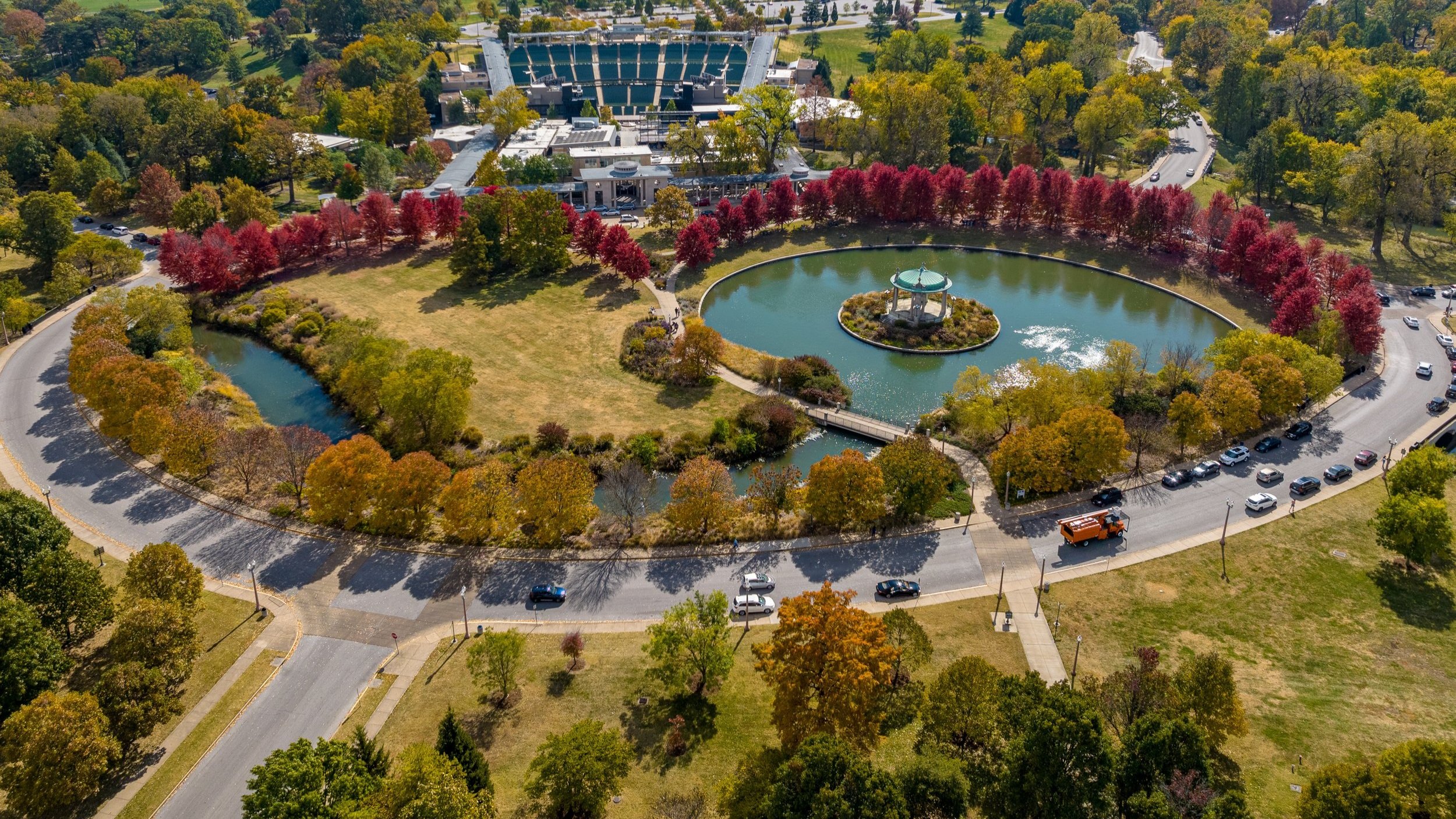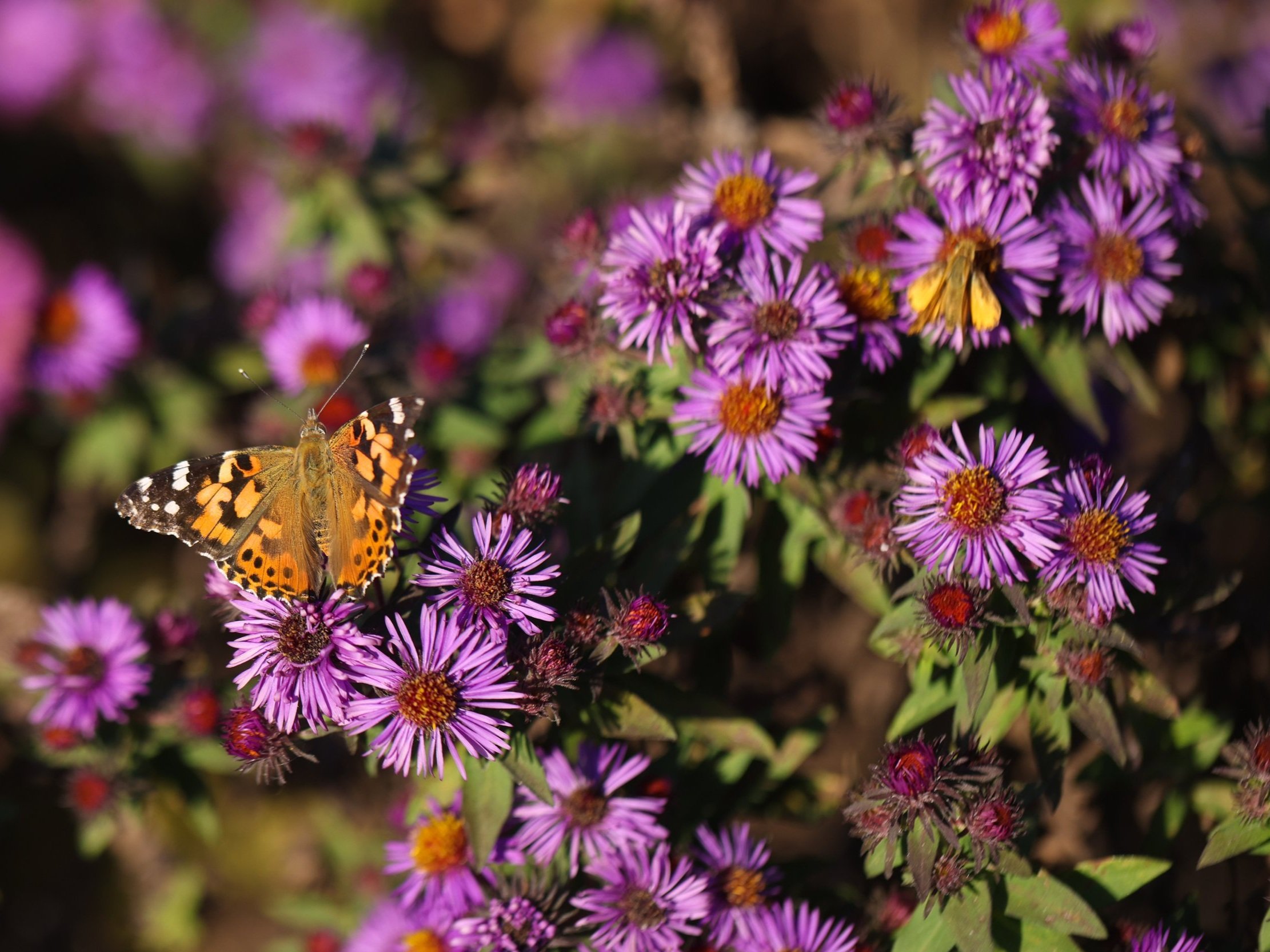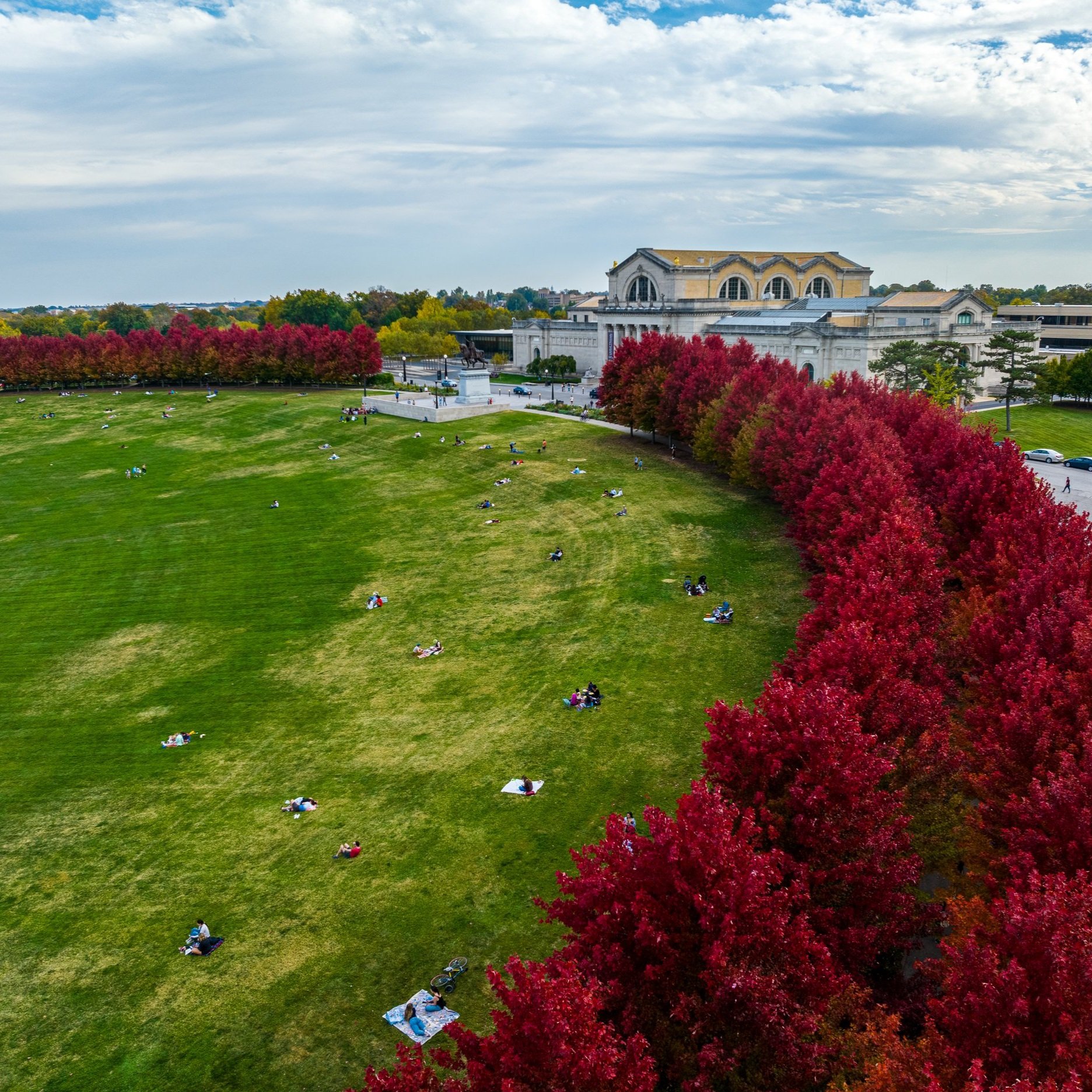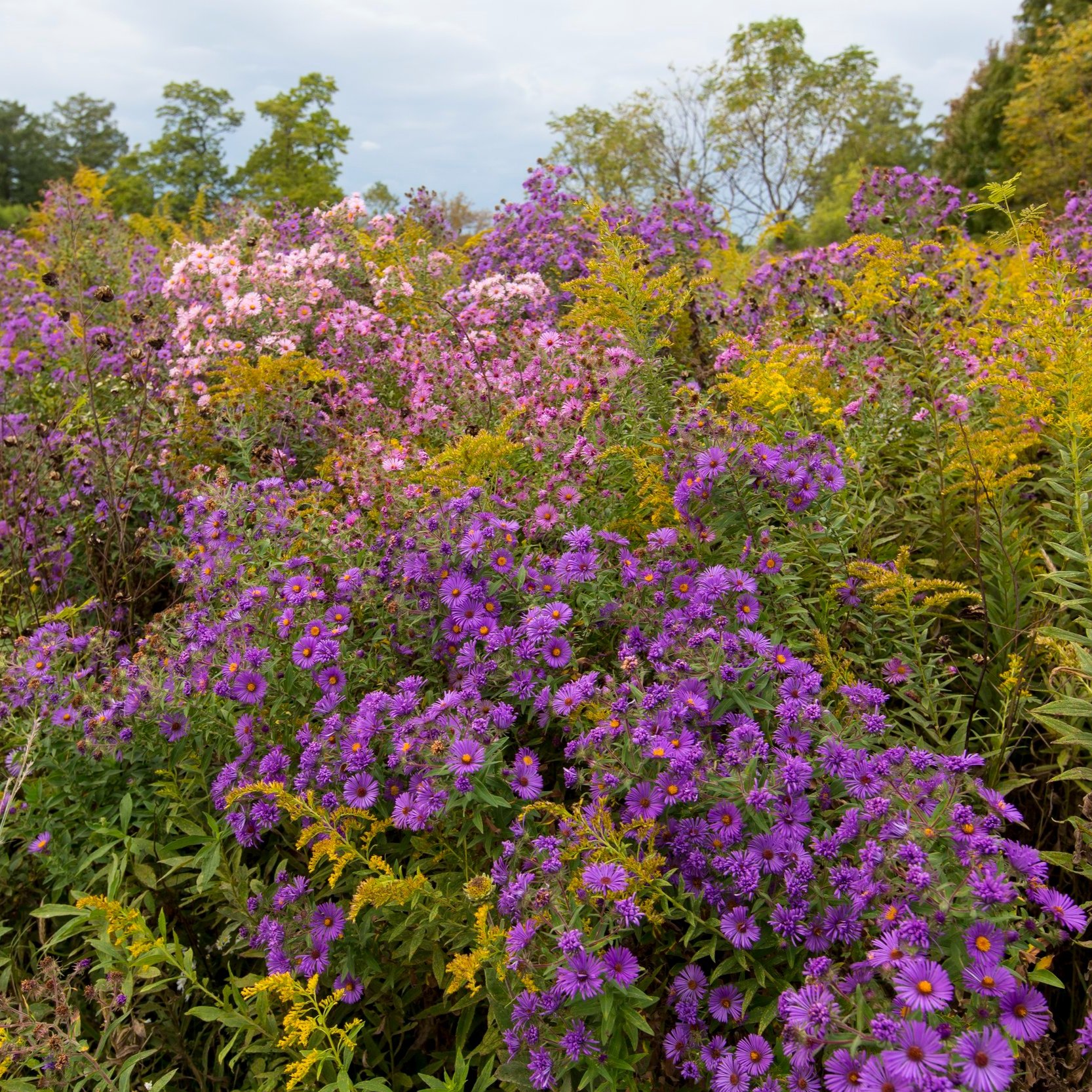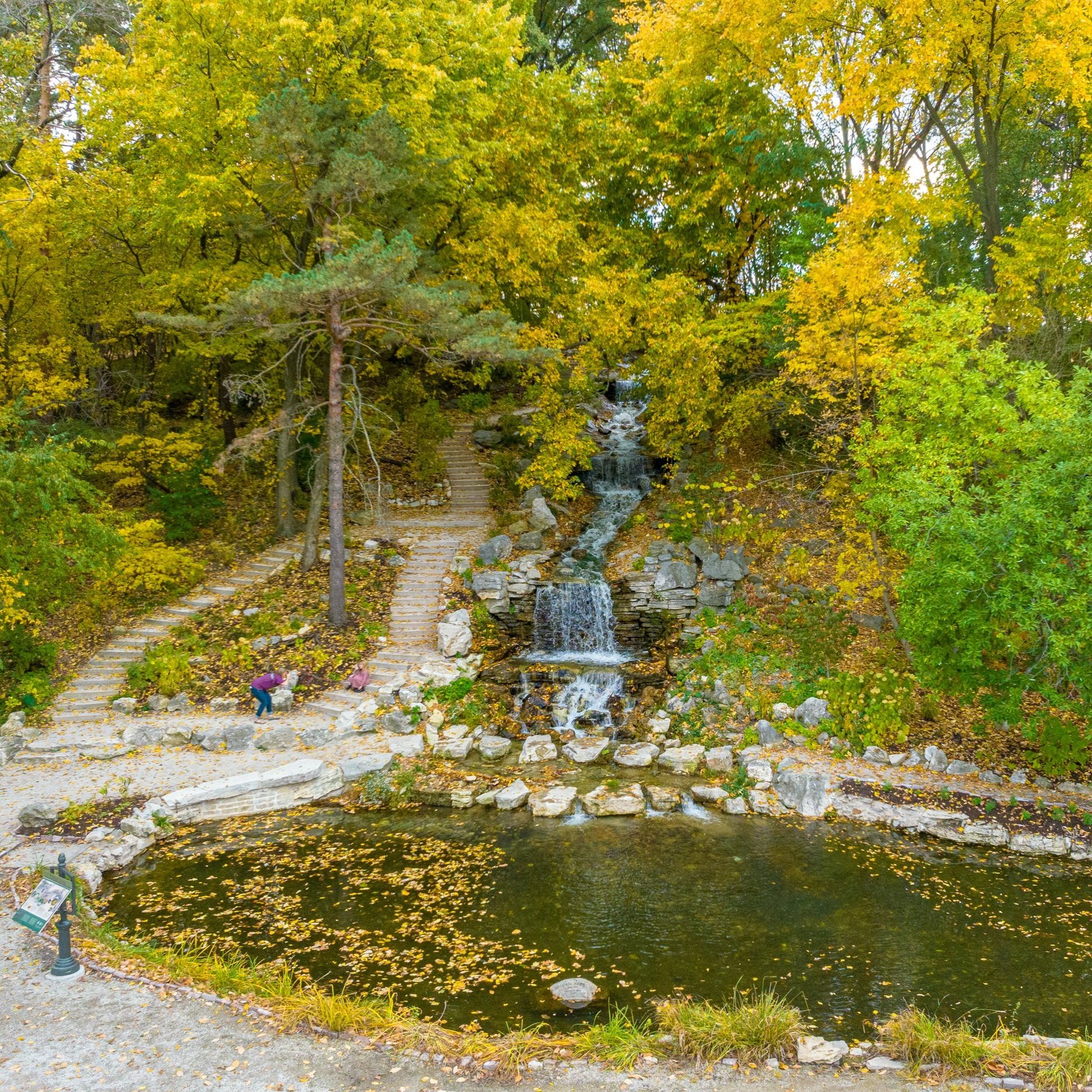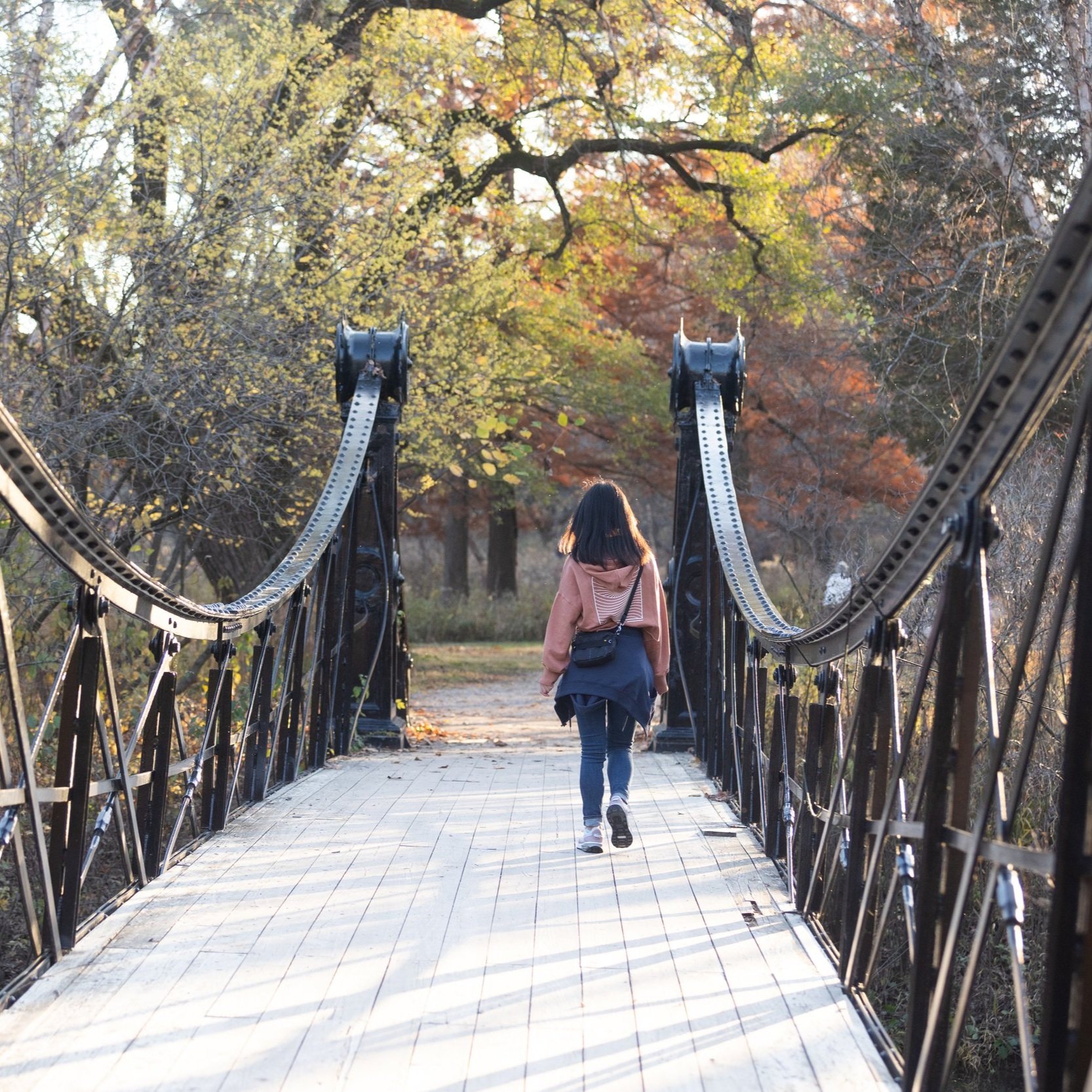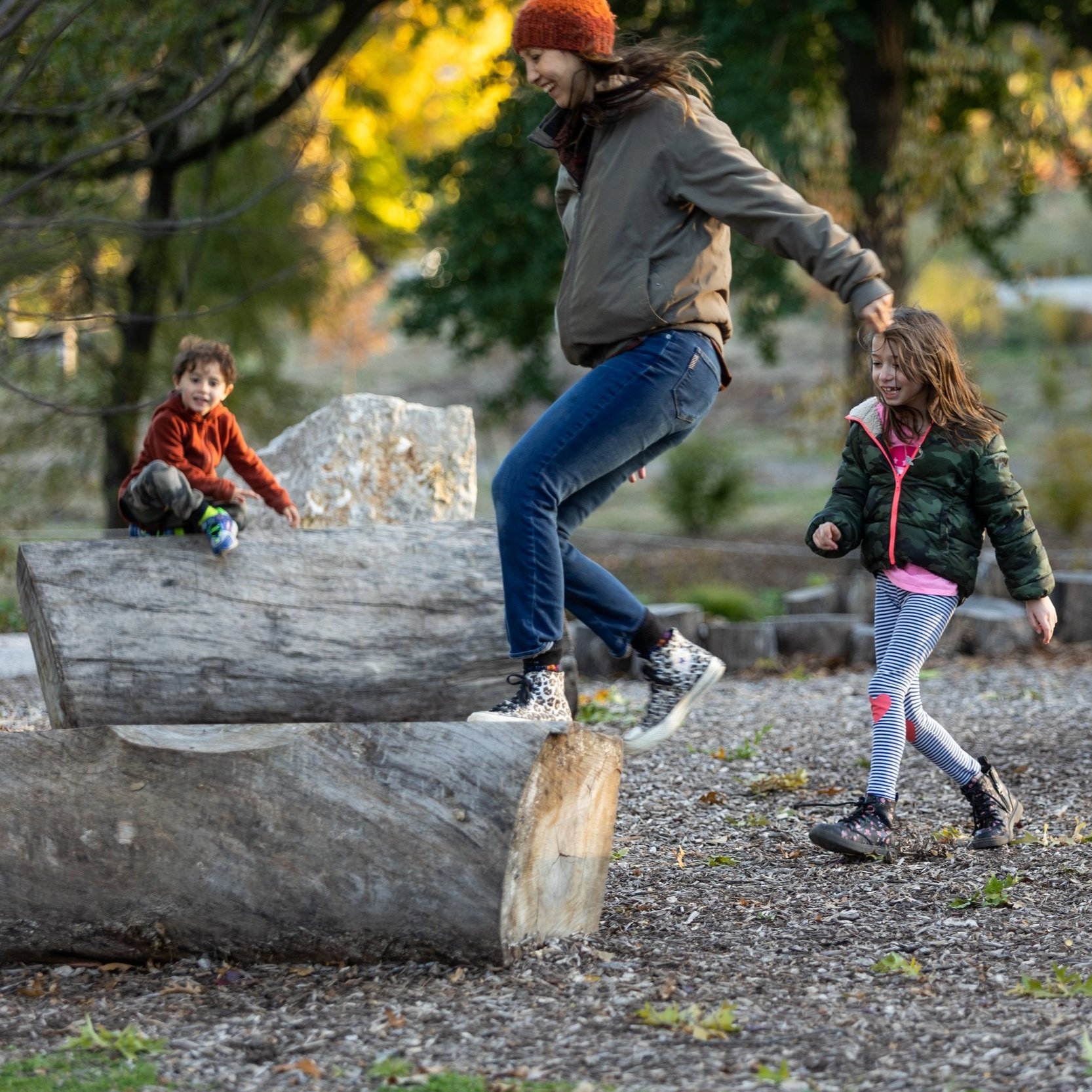Your 2023 Seasonal Guide to Fall in Forest Park
It's that time of year when chilly mornings warm into beautiful afternoons and many anticipate seasonal changes in Forest Park.
Fall is Not Only About Colorful Foliage.
One of the pleasures of Forest Park is the opportunity to observe the natural world in an urban habitat, and Forest Park Forever is committed to sustaining this essential ecological balance in our region.
Odonata — insects like dragonflies that only live one year — are in their final stage and actively mating. Dragonflies are easy to spot, cool-looking and highly active where there is water. So, you can find them all over Deer Lake Savanna and Murphy Lake.
Still classified as endangered, monarch butterflies are migrating across the metro area and have been spotted all over the Anne O'C. Albrecht Nature Playscape and Festival & Parking Plaza (Upper Muny Lot).
Migrating birds are also on the move from early September through October. Forest Park's Nature Reserve, specifically the John F. Kennedy Forest, is a resting area for various songbirds and is home to wild turkeys.
“The flora has definitely been impacted by summer flooding and the drought conditions in August and September.”
Weather Conditions Affect the Timing and Intensity of the Park's Color Pallet.
Some flora around St. Louis City already show clear signs of seasonal transition; however, the Missouri Department of Conservation's Fall Color Report confirms that most of the plant life in our region is not yet ready to shed summer green.
The dry and hot weather we experienced this summer caused some plants to go dormant earlier and others to abort, reduce, or take longer to flower. The result could mean less color in Park habitats; however, pending (fingers crossed) a warm fall and occasional rains, it could also mean that Asters may bloom longer into the season!
There are over 47,000 trees in Forest Park. Over the last two years — in partnership with the City of St. Louis and thanks to generous support from St. Louisans like you — Forest Park Forever has planted over 550 large trees and nearly 13,00 smaller trees and shrubs in our Nature Reserve.
The Forest Park Forever Land Management Team has long watched the Autumn Blaze Maple trees atop the Art Hill promenade and around Pagoda Circle to indicate the beginning of a most anticipated color change. Forest Park Forever Arborist Kendall Wachter suspects leaves will really start to change across the Park in mid to late October and peak in early November.
“Luckily, the recent warmer days and cool nights are conditions that support bright colors, so hopefully, things will balance out.”
The best way to see the complete transformation in the Park is to visit frequently! You can also follow Forest Park Forever's Facebook and Instagram Stories for updates on autumn colors.
Did you know we send an email when the colors are at their prime, including more suggestions and pictures of spots you will not want to miss? Make sure you are on our mailing list, and we will see you in the Park!

